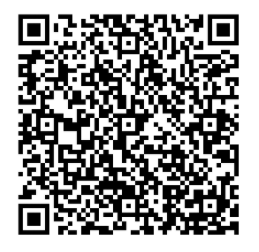Contact: Manager Jia
Tel: 023-45680422
Mobile phone: 13638329166
Mailbox: 2977868755@qq.com
Website: www.tlhgl.com
Address: No. 46, 3-2-2-3, Huaiyuan ancient rhyme North Street, Ba Chuan street, Tongliang District, Chongqing.

Stool
It is said that on the Lantern Festival long ago, when people watched the Dragon Lantern Festival, three young Tujia people became more and more energetic, dancing with hands and feet, eager to try, anxious and intelligent, and raised their benches to imitate the Dragon Lantern Dance, and they were very happy. Later, traditional sports were gradually formed, usually for entertainment and fitness, and performances and competitions during the festival, which were deeply loved by Tujia people.
There are two types of bench dragon: one is a simple bench dragon, which is lifted by three people and two people live in the former one; the other is made of thin strips, with taps, dragon tails, dragon horns, longan and dragon beaks, pasted with scales of various colors, and put the tied dragon on on the bench, four wooden feet to show Dragon claws. Often beautiful appearance.
Chongqing dragon lantern
There are two kinds of dragon and dragon. The Duben Dragon is danced by three people, one with the right hand and one with the left hand, each holding the front two feet, and the other with both hands holding the back two feet. When dancing, head and tail are asked to cooperate with each other. When the head is high, the tail must be low, the head to the left, and the tail to the right. The dragon tail must be composed of those who are quick, quick and have good eyesight. The two leaders of dance lead are basically consistent in height. The multi stool dragon consists of nine benches, one is a faucet, nine is a dragon tail, and the other is dragon body. The dragon head, led by the treasure-playing man, rises and falls from time to time, turns around and looks like a dragon coming out of water. The whole dragon needs to cooperate with tacit understanding and keep pace with each other. Bench Dragon's actions include: two dragons robbing treasures, Yellow Dragon wearing flowers, golden dragon playing water, golden cicada shelling, yellow dragon body panning, etc. Today, the bench dragon performance has been put on the stage of literature and art.
Therefore, the dragon is named after straw. With a large bunch of straw tied into a mouth, horn, eyes, beard of the tap, with a bundle of straw rope tied into the tap neck of the general length of the seven-section dragon body, and then with a straw tied into a fishtail-shaped dragon tail, a total of nine knots, with straw spaced together, each knot inserted a bamboo and wood pole. Dragon dancing is mainly held in rural villages of Tujia. From May to July of the lunar calendar every year, dragon dancing is a time for grass dancing. The meaning of dragon dancing is that entertainment includes two kinds of fire fighting and pestilence driving.
Drive out the plague. In May and June of the lunar calendar, the rice straw seedlings are fierce and long-term, the weather is hot, pests and diseases occur frequently, among which the destructive pests and diseases are "rice blast". In an era when science and technology are backward and can not be controlled, Tujia farmers use grass dancing to expel rice blast, long-term habits, gather people for entertainment.
Dragon Lantern Dance
Dancing grass drives the Dragon away from the village to the field. In each paddy field area and on each hill and ridge, the dancing moves are the same as that of the Lantern dragon. The dragon dancing troop performed its dancing skills in the sound of boasting horns, setting off three-eye guns, beating gongs and drums, and setting off firecrackers, which was quite spectacular. After all the field dance in their villages, the dragons were dragled to the edge of the stream to burn the dragon.
Move the flame. The Lunar New Year's Eve May or July is about to mature in the village. On Dragon Dance Day, a basin of water and a sieve of grain grains were placed in the middle of the halls of all the villages, waiting for the dragon dance team to come. In the dragon dance team, besides nine grasses, there is a fire that breaks a long bamboo into a boat shape and installs a basin of charcoal fire in the middle, which is carried by two people. There are also three people who shoot water, archery and dirt, and then a few free spectators. The dragon dance team, under the leadership of the local elders, entered the halls from the village head up and down successively. After that, the dragon head made three nods to the hall shrines, then circled the halls and danced in various patterns. At this time, the water ejector sucked water from the basin with a water ejector (shaped like the three chapters of "water gun") to shoot water (meaning fire extinguishing) in the southeast, northwest, central and five directions, while the Tulaos grabbed and sifted the five valleys in the middle, southeast, northwest, central and five sides and left one each. When the Chinese side was outside the main gate, the Dragon Dance went to another hall. When all the families of the village were dancing, they carried the grass dragons and flames to the side of the creek and burned them back to the sea. The Dragon Dance means that the dragon must move the flame God out of the village so as to keep the fire safe.